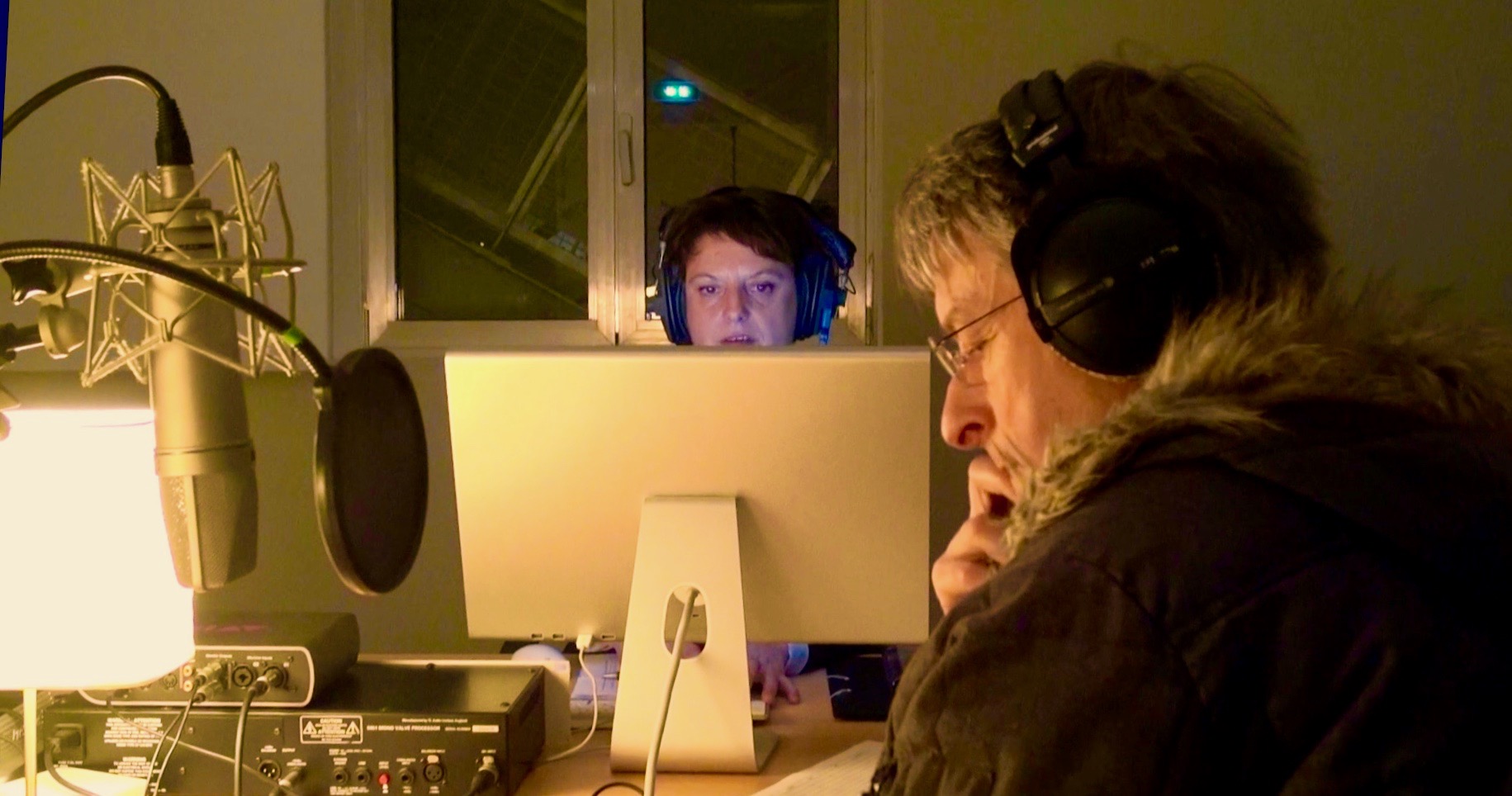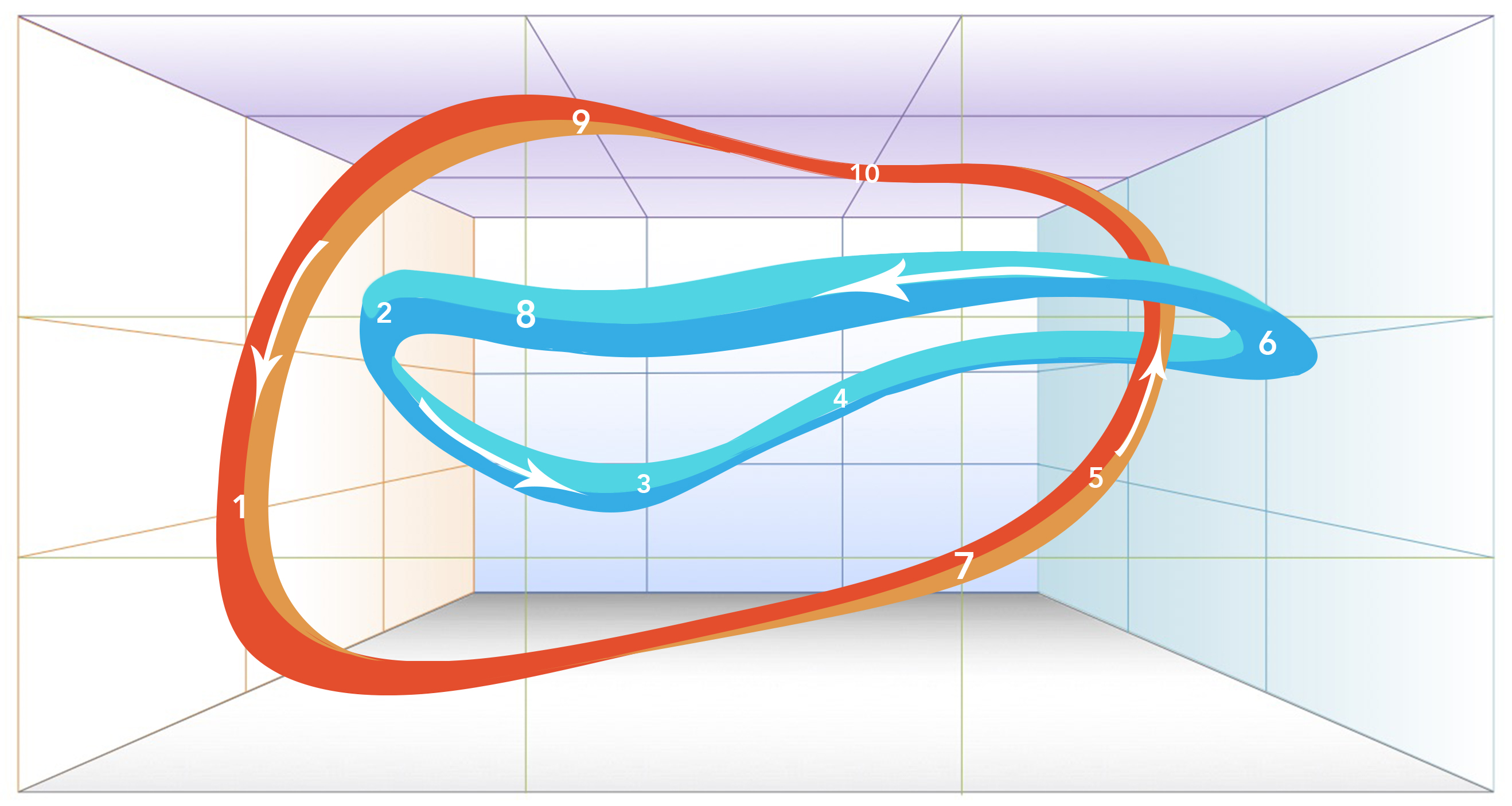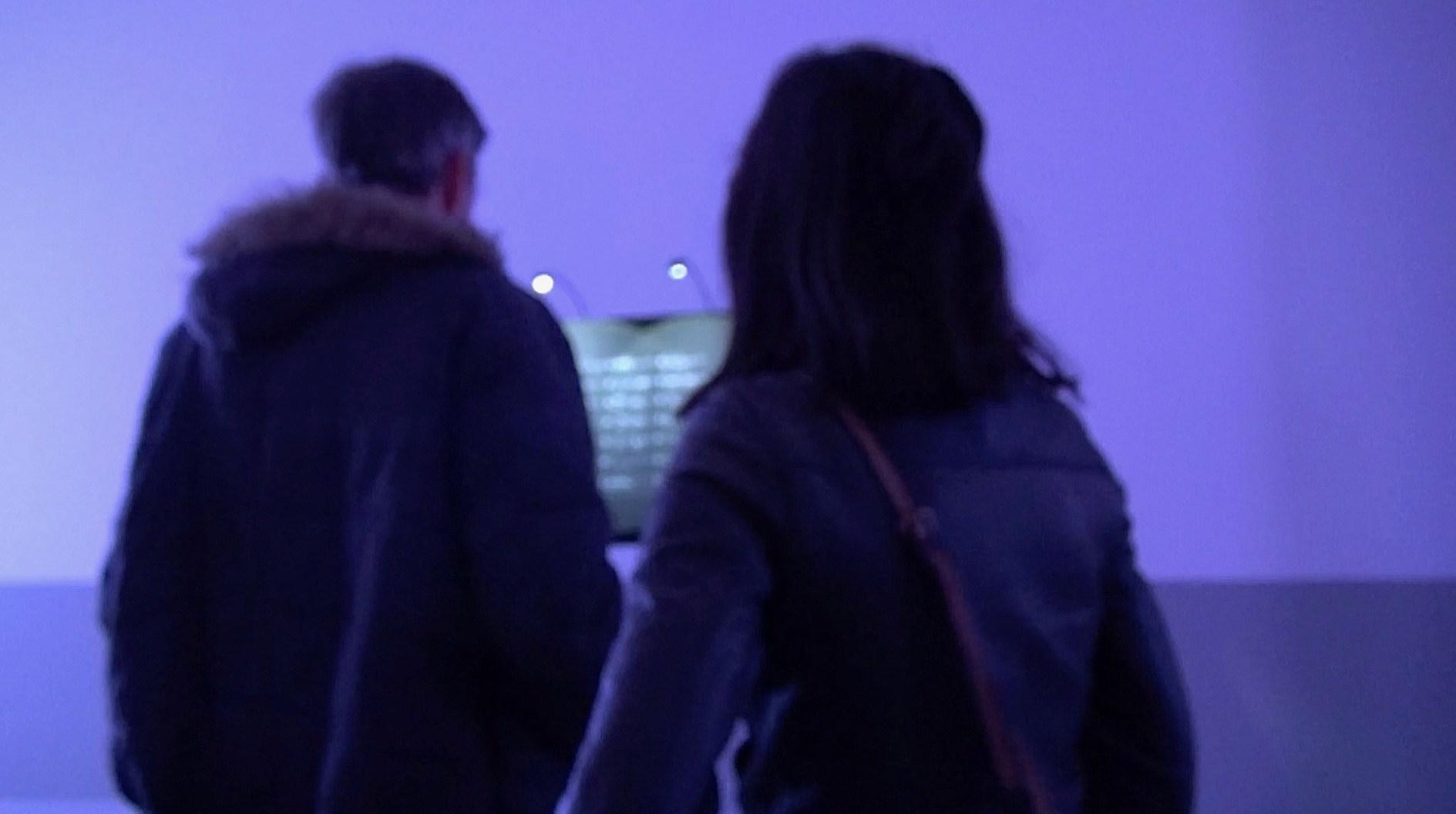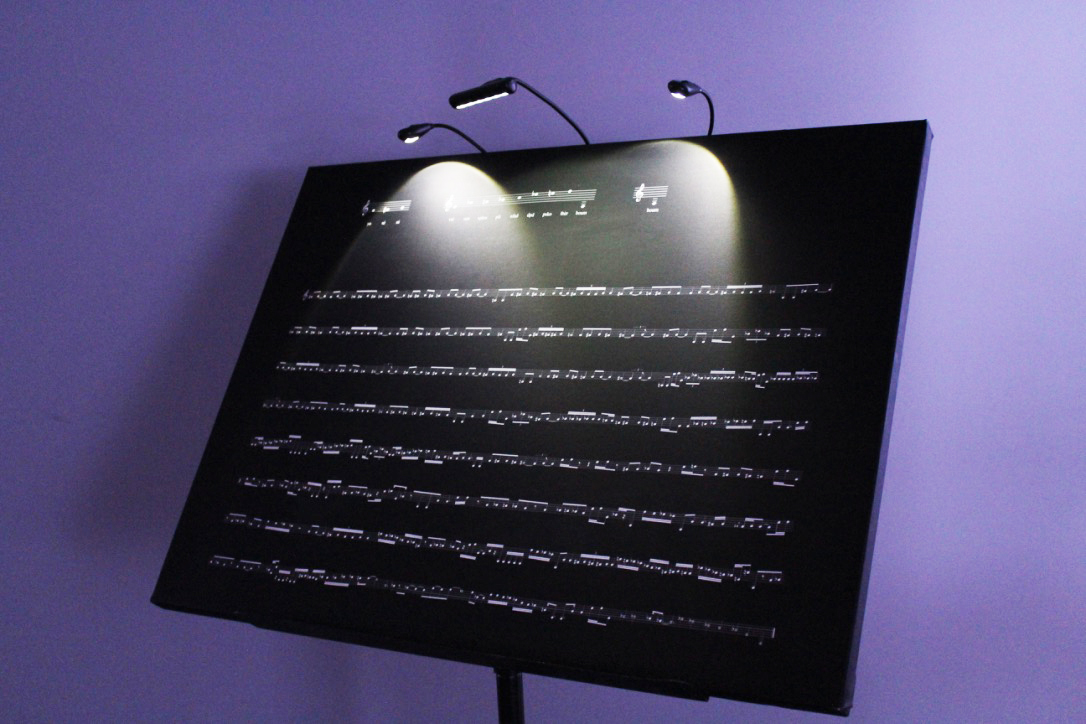GMEM – CNCM of Marseille / Aix-Marseille Université
Inscribed in a relational aesthetic, the installation offers the public a situation and an experience.
The public is invited to contribute to the recording of a musical fiction, based on a pastiche of Recitations of Aperghis.
During this time, in the broadcast space, the work carried out during previous recording workshops is played.
This creation, which offers the public both an experience of vocal invention and an experience of perception through listening, is linked to musicological university research, establishing links between the Recitations of Aperghis and Lacan's theory on the unconscious "structured like a language".

It is about making available to the public a situation in which the Other can participate, contribute to directed fiction. Each participant in turn enters the recording studio where I welcome them. After a draw in a deck of cards - referring to Stockhausen's Stimmung and Brian Eno's Oblique Strategies, he records a vocal word or sound.
Draw a card and sing it

The cards are drawn and recall the graphic style of the score of Stripsody by Cathy Berberian. It doesn't matter whether the person is a musician or not, the drawing gives an intention, a universe for interpretation. It's free and fun. It is also an intimate relationship with the artist.
Finally, the question of listening arises when the listener is confronted with his own voice, heard externally.
These new elements, rich in diversity of timbre, will then be edited according to an Aperghisian structure and remixed in deferred time, after each screening to be broadcast during a subsequent installation. The installation is enriched with each presentation..
Diffusion space: entwining the tori of demand and desire
The space, structured by ten speakers, reproduces the work done in previous workshops. Two trajectories of sound intertwine, to represent Lacan's topological scheme of the tori of demand and desire. Lacan relies on this diagram to show that the demand of one never corresponds to the desire of the other. One asks the other to desire what he asks, and what he asks the other to desire is only a fantasy that he constructs through a meaning that he attributes to the other, that is to say a fantasy of itself, a fantasy that Lacan calls the Great Other.

Hétérophony
Thus, two pastiches of the Aperghis Recitations are broadcast in heterophony – with reference to the work of François Nicolas – according to the two Lacanian trajectories: the first one, sang by myself represents the request, the other, sung by the participants of the previous installations represents desire, in other words the Big Other.

Pastiches
Pastiche allows both to better understand the original work - through the perception of the pasticheur - and to practice the musical language of the original composer, to make it a living language. Here it is a tribute to Aperghis.
Score-Paintings
Aperghis’s scores are particularly interesting from a graphic point of view. To highlight this dimension, the pastiche partitions are exhibited like paintings on canvas. The listener's gaze is solicited, which changes his musical perception. The viewer, initially listener, is guided by what he hears, his visual perception is also modified by his auditory perception.


Scientific papers
Le pastiche musical comme interprétation critique et esthétique (https://hal.archives-ouvertes.fr/hal-02004784v2/document), et Les “ trésors du signifiant ” dans les Récitations de Georges Aperghis (https://hal.archives-ouvertes.fr/hal-02004780v2/document).